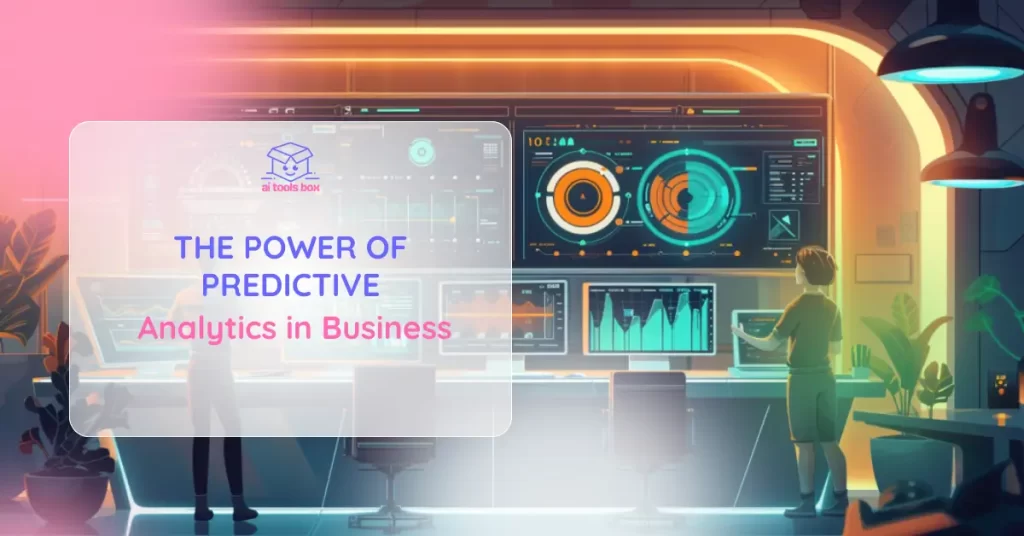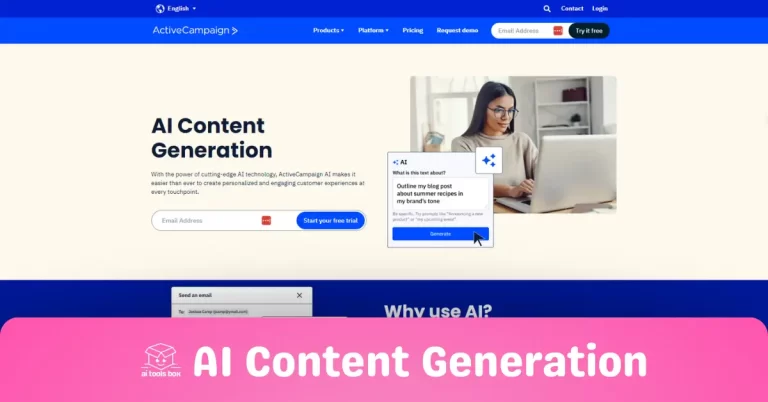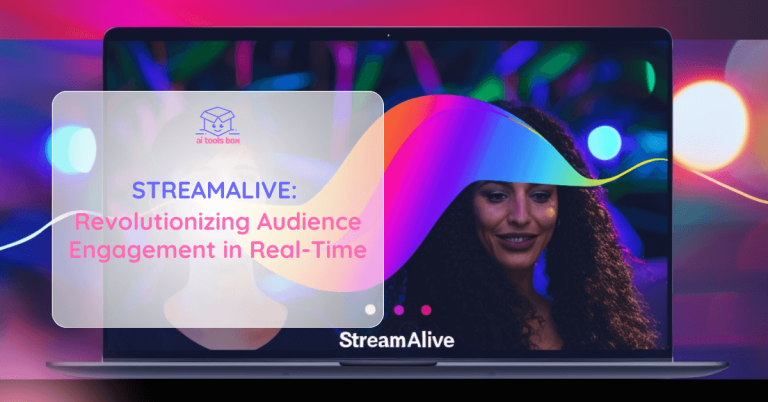Predictive analytics is revolutionizing the business world. This cutting-edge approach is not just a technological advancement; it's a pivotal tool for crafting future-proof strategies in an ever-evolving market landscape. Understanding and leveraging predictive analytics can be a game-changer for businesses looking to stay ahead of the curve.
In a rapidly changing business environment, predictive analytics offers a way to anticipate trends, adapt strategies, and make data-driven decisions that align with future market dynamics. It's not just about data analysis; it's about foresight that leads to proactive decision-making.
In this article, you will learn:
- How predictive analytics enhances decision-making and drives business success.
- Practical applications of predictive analytics in forming robust business strategies.
- Emerging trends in predictive analytics and its future impact on the business world.
Embarking on the journey of predictive analytics is like unlocking a treasure trove of insights. Let's delve into how this powerful tool is shaping the future of business.
Understanding Predictive Analytics
Predictive analytics is a fascinating field that merges statistical algorithms, machine learning, and data in order to forecast future outcomes based on historical data. It’s a branch of advanced analytics that's become essential for businesses seeking to navigate the complexities of today’s market. The goal is straightforward: to use past and current data to make informed predictions about the future.
This concept isn’t entirely new. However, its application in business has evolved significantly, thanks to advancements in technology. From rudimentary forms of trend analysis to sophisticated algorithms capable of processing vast amounts of data, predictive analytics has come a long way. It now incorporates a range of technologies including big data analytics, artificial intelligence, and machine learning, each playing a critical role in refining the accuracy of predictions.
The key components of predictive analytics in business encompass data collection and preparation, statistical analysis, and the use of predictive models. These components work in harmony to identify patterns, detect risks, and uncover opportunities, enabling businesses to act on insights that were previously hidden in their data.
Benefits of Predictive Analytics in Business
Predictive analytics is more than a technological tool; it's a catalyst for transformative business decisions. Here are some of the pivotal benefits it brings to the business landscape:
- Improved Decision Making: At its core, predictive analytics transforms data into actionable insights. By predicting future trends and outcomes, businesses can make more informed decisions. This foresight allows for better resource allocation, strategic planning, and identification of new opportunities.
- Enhanced Customer Experience: Understanding customer behavior is crucial in today's market. Predictive analytics helps businesses anticipate customer needs, preferences, and potential issues. This proactive approach leads to tailored services, personalized marketing, and ultimately, a more satisfying customer experience.
- Risk Management and Forecasting Accuracy: Predictive analytics plays a significant role in identifying potential risks and uncertainties. It allows businesses to foresee market changes, economic shifts, and potential disruptions, enabling them to prepare and respond effectively. This capability is invaluable in maintaining stability and continuity.
Each of these benefits contributes to a stronger, more resilient business strategy, allowing companies to not just survive but thrive in competitive environments.
Application in Business Strategy
The real power of predictive analytics becomes evident when we explore its practical applications in business strategy. Here’s how various industries are harnessing this tool to gain a competitive edge:
- Case Studies Across Industries: Industries like retail, finance, healthcare, and manufacturing are increasingly relying on predictive analytics. Retailers use it for inventory forecasting and personalized marketing, financial institutions for credit scoring and fraud detection, healthcare for patient care optimization, and manufacturers for predictive maintenance and supply chain management.
- Integration with Existing Business Systems: Predictive analytics isn't about replacing current systems; it's about enhancing them. By integrating predictive models with existing databases and business intelligence tools, companies can turn their historical data into a strategic asset. This integration allows for real-time insights and faster, more efficient decision-making processes.
- Role in Competitive Advantage and Market Positioning: In today’s data-driven world, the ability to anticipate market trends and customer needs is a significant competitive advantage. Predictive analytics helps businesses stay ahead by identifying emerging market opportunities, optimizing product development, and refining marketing strategies. This foresight is crucial for maintaining relevance and achieving long-term success in any industry.
Predictive analytics is not just a tool for large corporations. Small and medium-sized enterprises are also finding innovative ways to apply these techniques, demonstrating that the size of the data is less important than how you use it.
Challenges and Considerations
While predictive analytics offers immense potential, it's not without its challenges and considerations. Being aware of these is crucial for businesses to effectively leverage this technology:
- Data Privacy and Ethical Concerns: As businesses collect and analyze more data, concerns around privacy and ethics become paramount. Ensuring compliance with regulations like GDPR and maintaining ethical standards in data usage is essential. Transparency with customers about data collection and usage practices is not just a legal requirement; it's a trust-building measure.
- Limitations and Potential Pitfalls: Predictive analytics is powerful, but it's not infallible. The quality of predictions depends heavily on the quality of the data and the accuracy of the models. Misinterpretation of data or overreliance on automated predictions can lead to flawed decision-making. It's important for businesses to understand these limitations and use predictive analytics as one of several tools in their decision-making process.
- Overcoming Implementation Challenges: Implementing predictive analytics can be daunting, especially for businesses without a strong data analytics foundation. Challenges include integrating new systems with existing ones, ensuring data quality, and building or acquiring the necessary analytics expertise. Overcoming these challenges often requires a combination of strategic planning, training, and possibly partnering with external experts.
Understanding and navigating these challenges is key to successfully implementing and benefiting from predictive analytics.
Take a look at our special offers on AI business tools with artificial intelligence to be well prepared for future challenges and your competitors.
The Future of Predictive Analytics
The future of predictive analytics in business is not just promising; it's poised to be a cornerstone of strategic decision-making. Here's a glimpse into what lies ahead:
- Emerging Trends and Technologies: The continuous evolution of AI and machine learning is set to further enhance the capabilities of predictive analytics. We're looking at more sophisticated models that can handle complex datasets and offer even more accurate predictions. Technologies like neural networks and deep learning are paving the way for advancements in predictive modeling.
- Predictive Analytics in the Era of AI and Big Data: The intersection of predictive analytics with AI and Big Data is creating unprecedented opportunities for businesses. AI enhances the ability to process and analyze large volumes of data quickly, while Big Data provides the extensive datasets required for effective predictive modeling. This combination will enable businesses to uncover deeper insights and make more nuanced predictions.
- Future Role in Business Strategy and Decision-Making: Predictive analytics is set to become more integrated into the fabric of business strategy. Its role in forecasting market trends, understanding consumer behavior, and optimizing operations will be more crucial than ever. As businesses become more data-centric, the ability to predict and prepare for future scenarios will be a key differentiator.
Conclusion
In this exploration of predictive analytics in business, we've uncovered its transformative potential. We've seen how it enhances decision-making, tailors customer experiences, and sharpens risk management. Its application across industries underlines its versatility and impact on competitive advantage and market positioning.
But it's not just about the benefits. We've also delved into the challenges, from data privacy concerns to implementation hurdles. These insights are crucial for businesses to effectively navigate the complexities of adopting predictive analytics.
Looking ahead, the future of predictive analytics is intertwined with the advancements in AI and Big Data. Its role in shaping business strategies and decision-making processes is only set to grow, promising a landscape where data-driven foresight drives success.
As we conclude, a natural next step for readers would be to explore “Integrating AI and Big Data in Business Strategies.” This would offer a deeper understanding of how predictive analytics, AI, and Big Data can collectively revolutionize business decision-making and strategy formulation.





